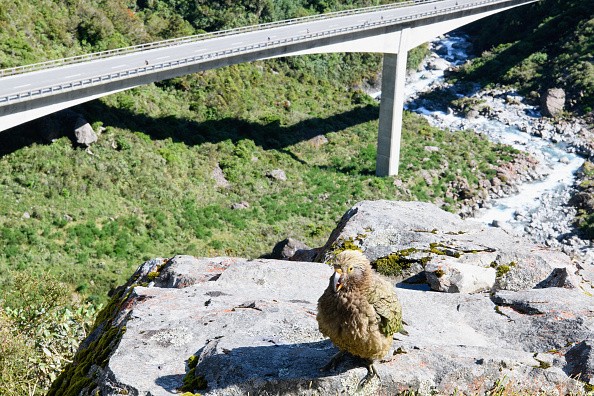As per a new study, an endangered New Zealand parrot called kea is clever to the extent of using touchscreens. But it seems the bird can't distinguish between the real and virtual worlds.

Kea
Researchers trained six keas at Christchurch's Willowbank Wildlife Reserve on how to operate touchscreens. The researchers presented the birds with some tasks that were either entirely on-screen, totally physical, or a combination of the two.
A PhD candidate at the University of Auckland and also the first author of the study whose name is Amalia Bastos said while researchers have thought the kea how to use electronic devices before now, the research revealed that virtual tests could be used to correctly study the natural behaviour of the bird in the real world.
Bastos is hoping that the research could make the success of endangered parrot breed-and-release conservation programs better.
She said: "They're really hard to keep in captivity because they're so intelligent, so they need to constantly be mentally enriched so that they stay mentally health"
This involves workers giving the parrots fun games they can play with. Bastos said: "They're very curious and they will very quickly learn that if they spend time around humans, humans are a positive thing".
Threats to Kea's Survival
In 2017, the kea was crowned New Zealand's bird of the year and it is the only alpine parrot in the world. The bird is a very curious and mischievous species, infamous for mauling windscreen wipers and searching through bags and it also stole a Scottish man's passport one certain time.
Lead poisoning that comes from housing finishings and deaths as a result of human interactions are threats to the bird's survival.
Bastos said kea reared while in captivity and provided with mental enrichment through screens, with no human interaction, might be more worthy of freedom in the wild.
She said: "It's really important to keep them away from human environments as much as possible."

The Study
Due to the fact that the beaks of the birds are made of keratin just like the finger of humans which are not able to activate touch screens, the researchers coated the devices with peanut butter and taught the kea how to activate the screens by using their tongue to lick them.
The researchers presented the bird with a black ball on a teeter-totter which tilted making the ball fall into one of both boxes. The kea understood how to track the ball and pick the box where it was concealed, to get food.
The task was recreated on-screen with totally virtual ball and boxes, before the team performed the task again with a combination of virtual and physical elements.
The kea anticipated a real box to have a virtual ball and this suggests the birds thought in the real world an on-screen event continued.
For more news, updates about keas and similar topics don't forget to follow Nature World News!
© 2025 NatureWorldNews.com All rights reserved. Do not reproduce without permission.





